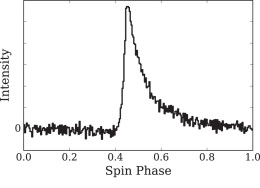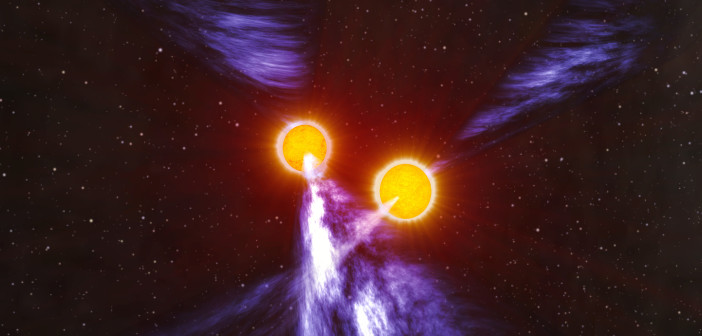Have you been contributing your computer idle time to the Einstein@Home project? If so, you’re partly responsible for the program’s recent discovery of a new double-neutron-star system that will be key to learning about general relativity and stellar evolution.

The 305-m Arecibo Radio Telescope, built into the landscape at Arecibo, Puerto Rico. [NOAO/AURA/NSF/H. Schweiker/WIYN]
The Hunt for Pulsars
Observing binary systems containing two neutron stars — and in particular, measuring the timing of the pulses when one or both companions is a pulsar — can provide highly useful tests of general relativity and binary stellar evolution. Unfortunately, these systems are quite rare: of ~2500 known radio pulsars, only 14 of them are in double-neutron-star binaries.
To find more systems like these, we perform large-scale, untargeted radio-pulsar surveys — like the ongoing Pulsar-ALFA survey conducted with the enormous 305-m radio telescope at Arecibo Observatory in Puerto Rico. But combing through these data for the signature of a highly accelerated pulsar (the acceleration is a clue that it’s in a compact binary) is very computationally expensive.

PSR J1913+1102’s L-band pulse profile, created by phase-aligning and summing all observations. [Adapted from Lazarus et al. 2016]
An Intriguing Discovery
Lazarus and collaborators followed up on the discovery to obtain timing measurements of the pulsar, which they found to have a spin period of 27.3 ms. They measured PSR J1913+1102 to be in a 4.95-hr, nearly circular (e~0.09) binary orbit with a massive companion that, based on its properties, is most likely another neutron star. The team wasn’t able to detect pulsations from the companion, but that could mean that its beam doesn’t cross the Earth, or it’s very faint, or it’s simply no longer active as a pulsar.

Orbital evolution of the six known double-neutron-star systems that will coalesce within a Hubble time, including J1913+1102 (black solid line). They move toward the origin as they lose energy to gravitational waves and approach merger. Shown are current positions (black dots), estimates of the positions when the compact binaries were formed (grey dots), and future evolution. [Lazarus et al. 2016]
Lessons from PSR J1913+1102
Observations of compact binaries such as this one can reveal a wealth of information. Besides providing clues about how the binary evolved, precise timing measurements (now being made) will also allow powerful tests of general relativity. One of the measurements that may be possible by the end of this year will provide information about the orbital decay of the binary — expected to continue for ~0.5 Gyr until the system merges — due to the emission of gravitational waves.
In the meantime, you can bet that Einstein@Home will continue hunting for more systems like PSR J1913+1102 and its companion!
Citation
P. Lazarus et al 2016 ApJ 831 150. doi:10.3847/0004-637X/831/2/150

1 Comment
Pingback: double neutron star found